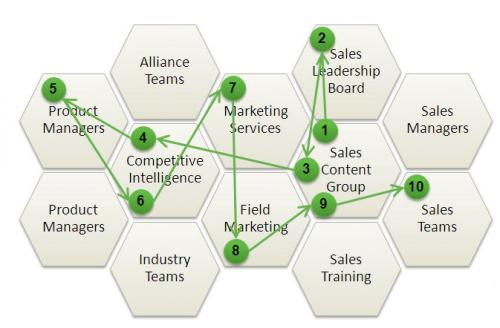Join Me In Creating Standards For Competitive Sales Battle Cards!
Forrester’s sales enablement team is launching a collaborative effort with our clients and other experts to establish standards for competitive battle cards and I invite you to participate – send me an email to join.
If you are on the receiving end of battle cards today, you know the big challenge intimately because I hear you daily in my inquiries saying things like, “how can we standardize battle cards that come from dozens of different teams?” and “How do we equip our sales reps to anticipate and respond to competitive obstacles more effectively?” For those of you on the supply side, I hear you too, saying, “every sales rep asks for different things” and “we don’t have a way to measure the impact of our work, so we keep doing what we think is best.”
Stuck in the middle are the folks battle cards are supposed to be helping in the first place – sales reps – who tell me, “it takes too much work to find and use our battle cards” and “I need competitive insights, but I tap other sources that are more reliable.”
Consider the size of this opportunity! When we get this right, we will be able to connect battle cards with real business outcomes – like faster sales cycles and win rates against key competitors – and isn’t that why we build battle cards in the first place? Opportunities will advance through the pipeline more quickly when sales reps have tools to anticipate and effectively respond to obstacles created by competitors.
We can fix this!
So why take this on now?
A growing number of sales enablement leaders have taken on the challenge of fixing the battle card problem and are finding that the battle cards delivered to sales pass through several sets of hands on the way. One group defines which battle cards sales needs, another contributes the competitive insights, and yet another looks at content drafts and edits that down based on their perspective on what sales reps need – all before anyone in the sales organization sees the document!
the battle cards delivered to sales pass through several sets of hands on the way. One group defines which battle cards sales needs, another contributes the competitive insights, and yet another looks at content drafts and edits that down based on their perspective on what sales reps need – all before anyone in the sales organization sees the document!
Here is just one example: During a recent conversation with a sales enablement leader at a software provider, she described the following battle card process at her company. Her challenge is that nobody takes primary ownership for battle cards – not until she called timeout anyway. And she is not an expert in competitive intelligence, but she received the assignment to “fix the battle card problem.”
Her world, in reality is far more complicated still. Her team has to work with dozens of product management teams, geography leaders, and field marketing groups that span major business units.The result is that no two battle cards are alike, they have no common design point, and sales people are not getting the value intended from using them. It’s a mess.
Put another way, she has nearly an infinite combination of contacts and relationships that she has to navigate to fix a problem that really should not be her problem at all – or anyone’s for that matter. If only there were a clear standard she could demand and reinforce.
The initiative that I am driving to create battle card standards is intended to arm sales enablement leaders with the standards they need to address situations similar to our client at this software company. Some of you are launching battle card programs for the first time; others of you have established programs that seem to be working, but don’t have any metrics to show the value of your work. The effort will help you too.
The standards that we create for battle cards will be an asset for sales enablement professionals to communicate common definitions for battle cards, give them a baseline for scope, content, and quality, and the metrics needed to gauge their impact on sales.
As someone who works with battle cards, on either the supply side or the enablement side, I invite you to join our initiative to create battle card standards. This team will kickoff on Wednesday, August 3, 2011 and meet weekly – send me an email to get involved.